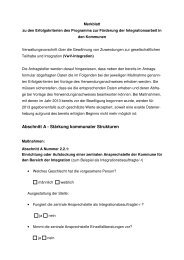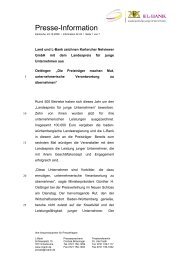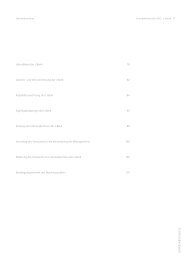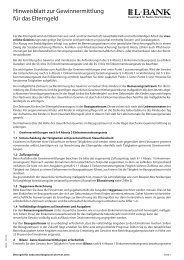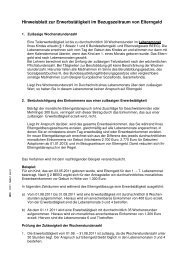Landeskreditbank Baden-Württemberg - L-Bank
Landeskreditbank Baden-Württemberg - L-Bank
Landeskreditbank Baden-Württemberg - L-Bank
You also want an ePaper? Increase the reach of your titles
YUMPU automatically turns print PDFs into web optimized ePapers that Google loves.
Notes to the annual financial statements of<br />
<strong>Landeskreditbank</strong> <strong>Baden</strong>-Württemberg – Förderbank –<br />
for the financial year ended December 31, 2003<br />
General principles<br />
<strong>Landeskreditbank</strong> <strong>Baden</strong>-Württemberg – Förderbank (L-<strong>Bank</strong>) was established by legislation passed on<br />
November 11, 1998, which came into effect on December 1, 1998. In accordance with § 2 para. 1 subpara. 1 of<br />
the L-<strong>Bank</strong> Act, the share capital of the <strong>Bank</strong> is EUR 250 million.<br />
The financial statements for L-<strong>Bank</strong> have been drawn up in accordance with the provisions of the German<br />
Commercial Code (Handelsgesetzbuch [HGB]) and the Regulation on the Accounting Principles Applied to<br />
Credit Institutions (Verordnung über die Rechnungslegung für Kreditinstitute [RechKredV]).<br />
Headings and items on the balance sheet and statement of income are classified in accordance with the<br />
financial statement forms that appear in RechKredV. In the process, L-<strong>Bank</strong> has added an extra item to the<br />
expenses side of the statement of income, “Allocation to reserves for interest rate reductions” (§ 265 para. 5<br />
HGB).<br />
The majority interests declared in the financial statements are of minor significance overall. For this reason<br />
the <strong>Bank</strong> did not prepare consolidated financial statements for the period (§ 296 para. 2 HGB).<br />
Foreign currency translation principles<br />
Foreign currency amounts have been translated in accordance with the provisions set out in § 340h HGB<br />
and declaration BFA 3/95. Assets and liabilities denominated in foreign currencies, together with unprocessed<br />
spot exchange transactions, have been translated at the middle spot rate on December 30, 2003, being the last day<br />
of the year on which there was a liquid market.<br />
For purposes of currency translation, currency items have been calculated by offsetting claims and<br />
obligations arising from on-balance-sheet and off-balance-sheet transactions in the respective currencies. These<br />
transactions were classified and valued using the special cover option in the respective currencies. Accordingly,<br />
all expenses and earnings arising from currency translation are shown in the income statement as required by §<br />
340 h para. 2 subparas. 1 and 2 HGB; there was no requirement to show income under a separate heading as the<br />
items outstanding on the balance sheet date fall within the same timeframe.<br />
Methods of accounting and valuation<br />
Assets, liabilities and pending transactions have been valued in accordance with the general provisions of §§<br />
252 ff. HGB, taking into account the special rules applying to credit institutions (§§ 340e ff. HGB).<br />
Receivables from credit institutions and customers are shown at par value, liabilities to credit institutions<br />
and customers at redemption value. Any interest-based differences are shown under deferrals and pre-payments<br />
and written back pro rata temporis. Service charges are entered immediately. Low-interest or non-interestbearing<br />
receivables are discounted. Reserves for interest rate subsidies are set up to cover loans made under the<br />
auspices of development programs. Zero bonds and similar securities issued are shown at the issue price plus<br />
interest calculated up to the balance sheet date pro rata temporis.<br />
All recognized individual risks and country risks arising out of the <strong>Bank</strong>’s lending business were<br />
appropriately provided for, either by accumulated amortization for losses on individual loan accounts or by<br />
reserves. Lump-sum reserves have been established to cover latent credit risks, and the <strong>Bank</strong> maintains<br />
prudential reserves to cover general banking risks. Individual provisions and lump-sum reserves have been<br />
deducted from the assets or liabilities side as appropriate, as has the reserve for general banking risks set up in<br />
compliance with § 340f HGB.<br />
F-31



